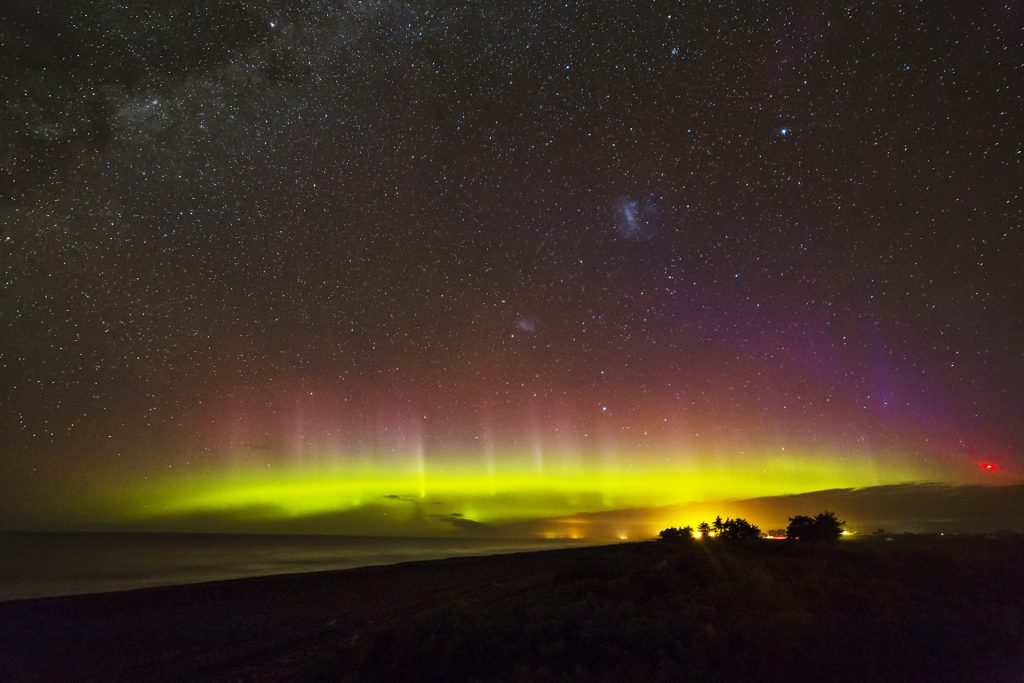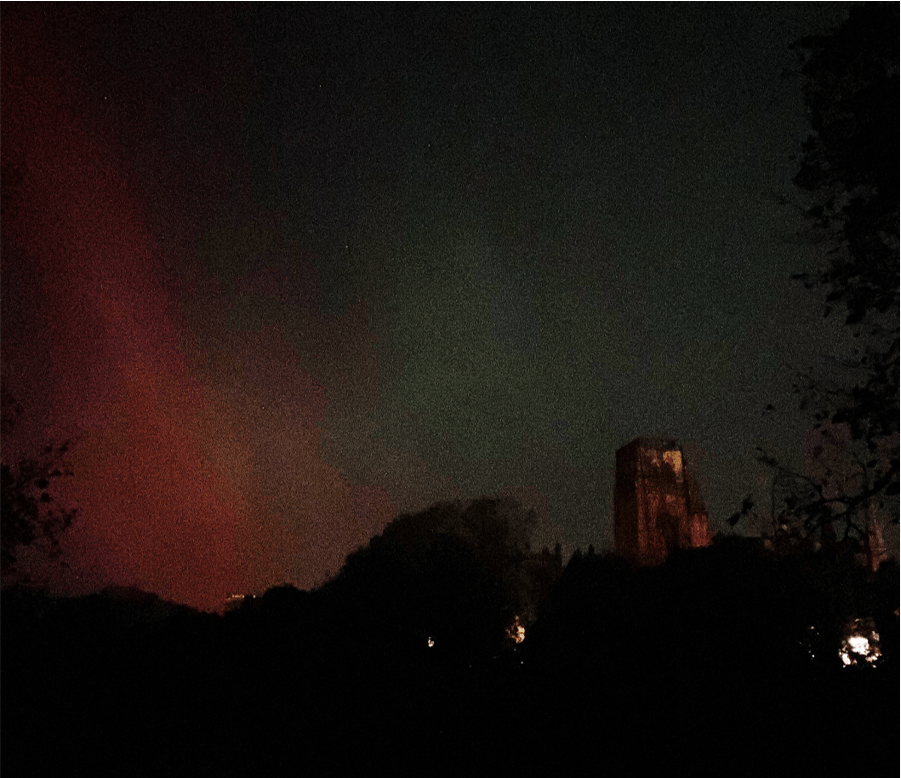I’m sure many of you have noticed the strange increase in aurora sightings in Durham over the last year, well it’s not just you, there’s a scientific explanation for this increased activity.
We first need to understand what causes them. The sun is a massive ball of swirling plasma, which is a superheated state of matter so hot that electrons are ripped away from their atoms forming an ionized gas. Hence, it is useful to think of plasma as a soup of positively charged particles (ions) and negatively charged particles (electrons) which swirl around each other. When charged particles move a magnetic field is generated and thus this swirling plasma generates complex magnetic fields depending on its motion. The exact science behind the suns erratic magnetic field is not entirely understood but theories suggest that this swirling motion is responsible, with the erratic behaviour being caused by the magnetic field lines becoming bundled and twisted in some areas (known as a magnetic flux rope). These bundles of field are observable as sunspots on the surface due to the magnetic field there preventing the influx of hot gas from the sun’s interior, and hence leading to a cool spot forming. When these field lines become too stressed, they are forced to realign into a smoother configuration (known as magnetic reconnection), which can cause an explosive release of electromagnetic radiation (known as a solar flare) and/or high speed charged particles (known as a coronal mass ejection, CME). CMEs are for more directional, and, being made up of massive particles, take significantly longer than solar flares to reach Earth (a few days for CMEs vs. a few hours for solar flares). When directed at Earth, these charged particles bombard the upper atmosphere, but thanks to the Earth’s own magnetic field they are redirected towards the poles. This leads to the Aurora Borealis in the north and Aurora Australis in the south.

Coronal Mass Ejection from the sun. Image by Peter D. Tillman on Flikr
It useful to introduce the concept of energy levels in atoms now. Every atom absorbs a unique set of energies/light which will excite one of its electrons into a higher energy state. When this electron deexcites the energy is released in the form of a specific wavelength of light, which is similar to how neon lights operate. This is what happens in our upper atmosphere during auroras, the incoming charged particles collide with oxygen and nitrogen molecules causing excitation, and these molecules then emit the colours we see. The colours observed depend on the gas mixtures present:
Green Auroras:
Produced from collisions with a high concentration of oxygen molecules at altitudes of approximately 100 to 300 kilometres up. These are the most common and are often more easily observed with human eye as it is more sensitive to the green colour spectrum.
Red Auroras:
These are far less frequent than their green counterparts and are typically associated with more intense solar activity. They are produced by collisions with oxygen at altitudes of 300 to 400 kilometres, where the lower oxygen concentration and higher energy solar activity make the red emissions more visible.
Blue and Purple Auroras:
Even less common then red, and once again associated with high intensity solar activity. These are emitted due to collisions with nitrogen at altitudes less than 100 kilometres, and hence are typically only visible in the lower parts of an aurora display.
Yellow and Pink Auroras:
These result from a combination of the other colours and hence are also exceedingly rare.
But why are we getting so many now? This is due to the sun reaching its peak in an 11-year cycle of activity. This cycle is a result of the sun’s magnetic poles flipping every 11 years (north becomes south, and south becomes north). During the flip, which often takes multiple years, few sunspots are observed as the magnetic field is reconfiguring itself, hence there is little solar activity. Once the flip has occurred, we have a 4-5 year period of relatively stable global magnetic field, which allows larger sunspots to develop and hence solar activity to increase. It is believed that these sunspots are responsible for driving the solar cycles as plasma flows in the sun move them towards the poles, and, as they tend to have opposite polarity to the pole they move towards, when they build up in significant number they can induce the flipping process.
The 25th solar maximum (maximum solar activity in the cycle) is currently being reached and is set to continue throughout 2024 and into 2025. So, if you have missed them so far there is still time to get a glimpse of this fascinating phenomena. This journalist would recommend downloading an app like AuroraWatch to maximise your chances.
Featured photo by Paul Stewart on Flikr.


